15.08.23 — Travel
Kyoto
After a couple of hours of sudoku on the bullet train from Tokyo, the tannoy announced that we’d be making a brief stop in Kyoto and that anyone alighting should be well prepared. A little stressed by the prospect of missing my stop, I rushed to collect my things and then practically threw myself off the train and into the stifling humidity of Kyoto.
I then proceeded to get somewhat lost in the train station as I searched for a way to get to the metro lines without having to haul my case down some stairs. I eventually gave up and had to do just that, so I was very relieved once the metro came along and whisked me off to my hotel in a cool, air-conditioned cab.
The hotel I’d booked was to be quite the flashback, as we’d worked on the rebranding of the EN Hotel chain a few years back at Erretres. I’d let the EN Hotel team know I was checking into this, the first of their hotels to be renovated with the new brand, and was very touched when I arrived to my room to find a note from them welcoming me to the city.

Tired from my trip, I threw myself down for a nap, after which I headed out into the night to look for some food and explore the centre of Kyoto. On the way, I stumbled across a street party as part of the local festivals, so I stayed a while to take some pictures before heading off to a curry restaurant that had I had been recommended by my contacts at the hotel.
These lanterns were part of a much bigger parade float.
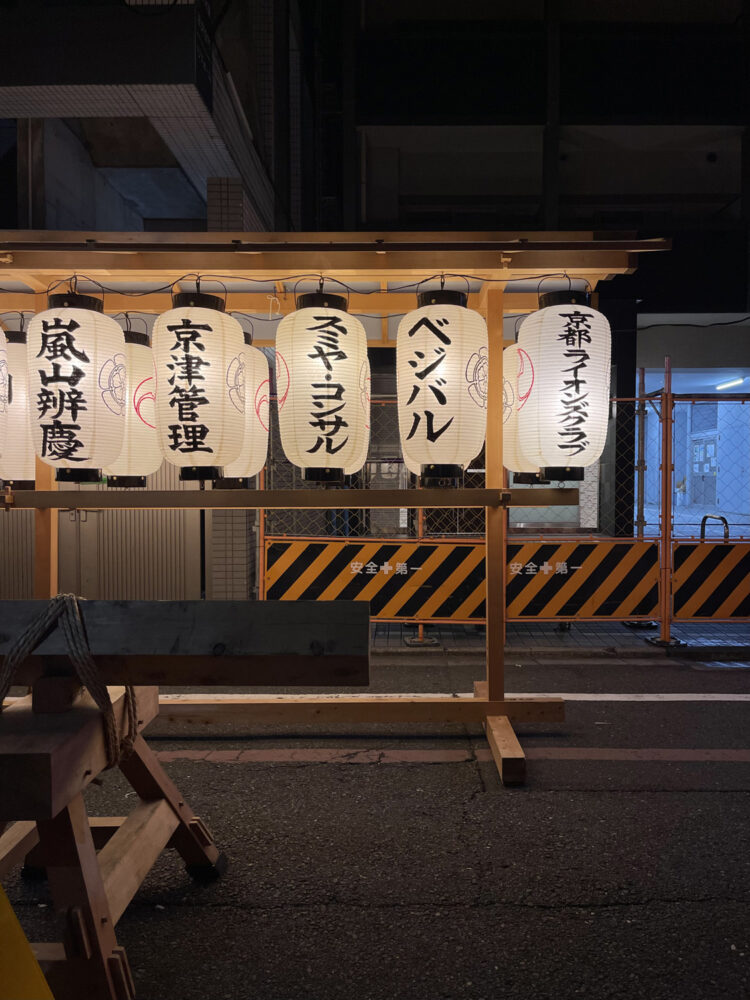
My first experience in a Japanese restaurant didn’t start very well, as I sat down and ordered only to realise that I had no cash on me. I asked if I could pay with card, to which I was told that I could not, and so I asked where the nearest cash machine was. As the guy behind the bar started preparing my curry, I was pacing down the road to a Family Mart to go grab some money. Quite the start!
The drama was worth it though, as my evening meal was absolutely divine, albeit quite spicy. This was nothing that the yoghurt and the delicious pickled vegetables couldn’t sort out, though. As I tucked into the beautifully presented dish, the chef asked me where I was from. After I explained that I was from the north of England and near Manchester, he pottered off and changed the music to The Smiths, a little gesture that had me grinning from ear to ear.
Once I’d finished my meal, I chatted with the owner for a short while, before putting those crisp yen to good use and paying up in order to have a quick snoop around the centre of Kyoto. I came across one of the main thoroughfares, which was resplendently decorated with lanterns and other motifs, but I soon grew tired and so caught a bus a few stops back to my hotel for the night.
The next day I grabbed breakfast at the hotel and then hailed down a bus to take me to a neighbourhood called Gion in the east of the city. This is the area that Kyoto is most famous for as it is chock-full of temples, geishas, and old little streets connecting everything together. Having started the day sweating and perturbed by a foul odour in the air, I was hoping that the first temple I pottered into would raise my spirits and maybe even provide a little bit of shade.
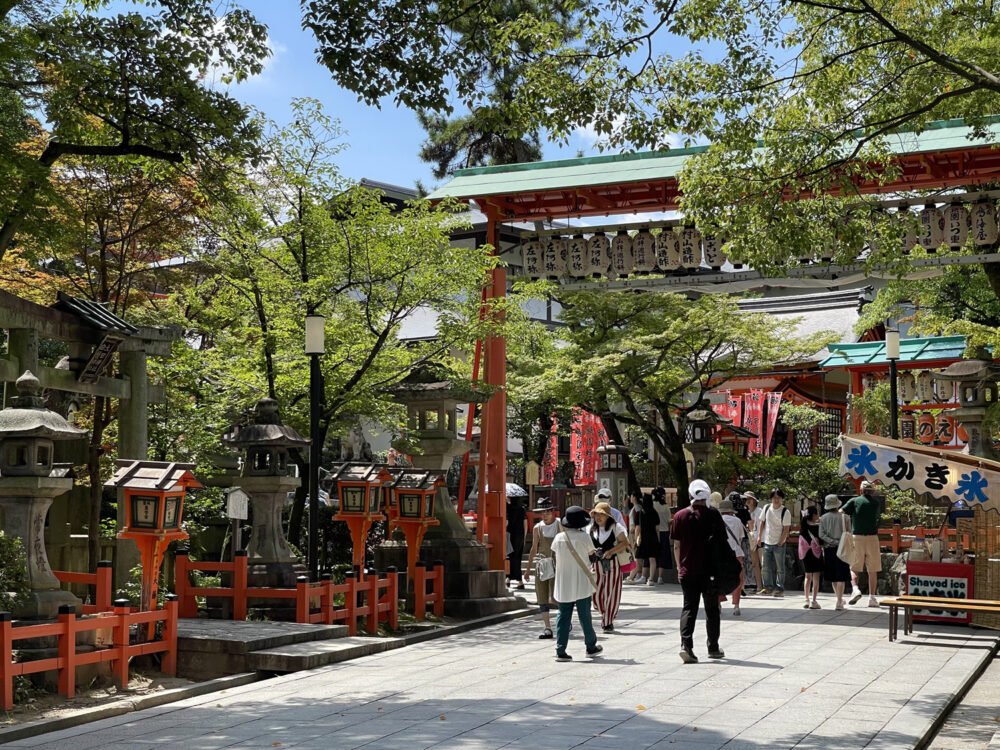
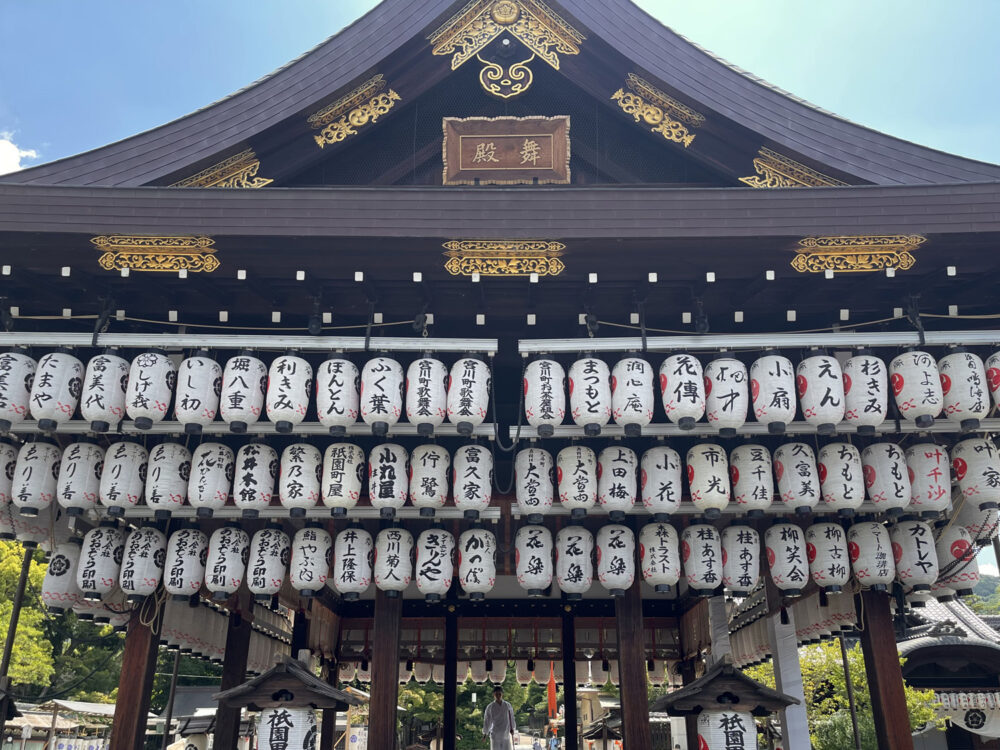
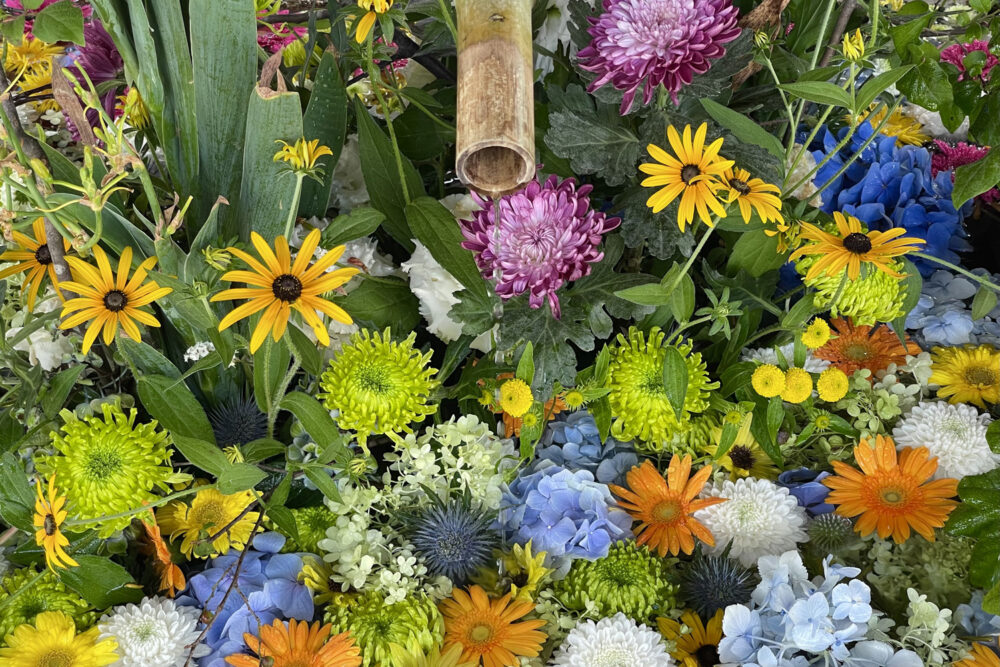
This was the Yasaka Shrine, a gorgeous complex full of structures, lanterns, and pathways through pretty forests peppered with shrines and other symbology. One of my favourite little features was a hand washing station full of flowers, as can be seen in the photo above.
Despite being surrounded by such beauty, I soon found myself floored by the oppressive heat. To combat this I downed an electrolyte drink, left the temple, and sat for a while below a weeping tree in a green space around the back. This was Maruyama Park, a spot which I believe is lovely in spring and is known for its cherry blossoms, but which on this day functioned solely as a respite spot from the unrelenting sun.
Once I’d perked up a bit, I left this admittedly pretty little park and found myself wandering along the ancient streets of Gion. I passed by many gorgeous buildings spanning different eras of Japanese architectural styles, from intricate red wooden shrines to minimal private houses.
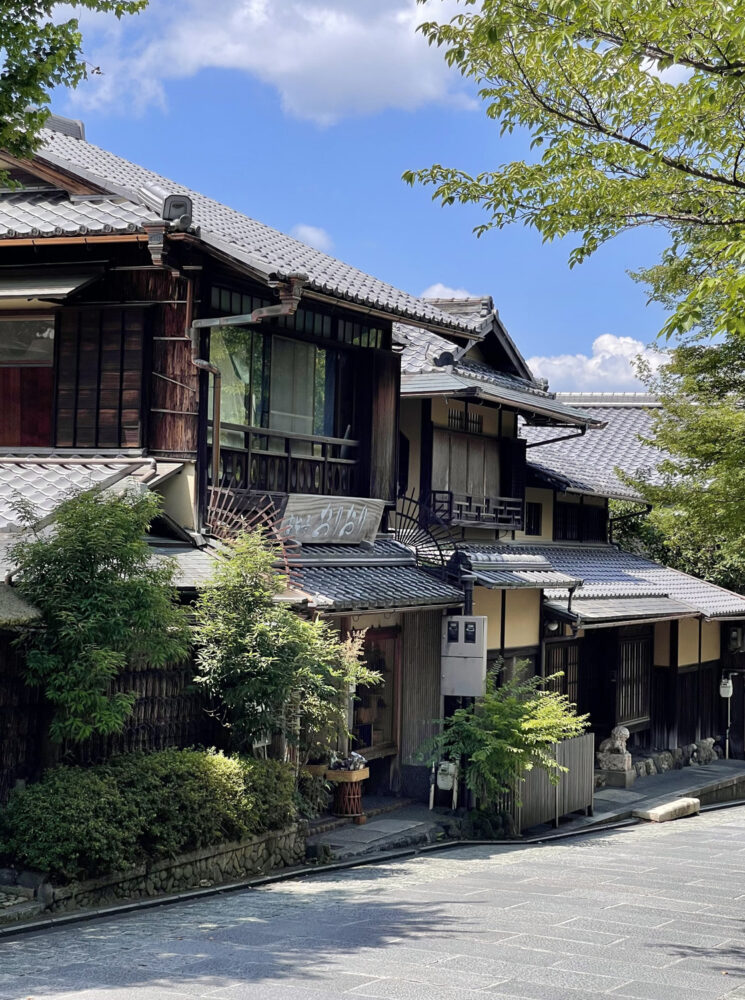
The buildings forming the quaint streets of Gion were gorgeous.
A silly little detail I was fascinated by was the way in which water is drained from the roofs. Rather than having a solid pipe leading from the gutter to the ground, most buildings employed what I’ve just discovered are called kusari-doi or “rain chains”. These consist of a chain of ornate and interlinked metal cups which pass rainwater from one to the next, creating a sort of water feature out of the flow. I wish I could have seen one in action, but alas there was no chance of rain with the omnipresent sun…
After a while, I stumbled across a long stairway which led to what looked like the entrance to another shrine. With no plan of action in place, I followed my curiosity and headed upwards, paying a small fee to explore this next temple.
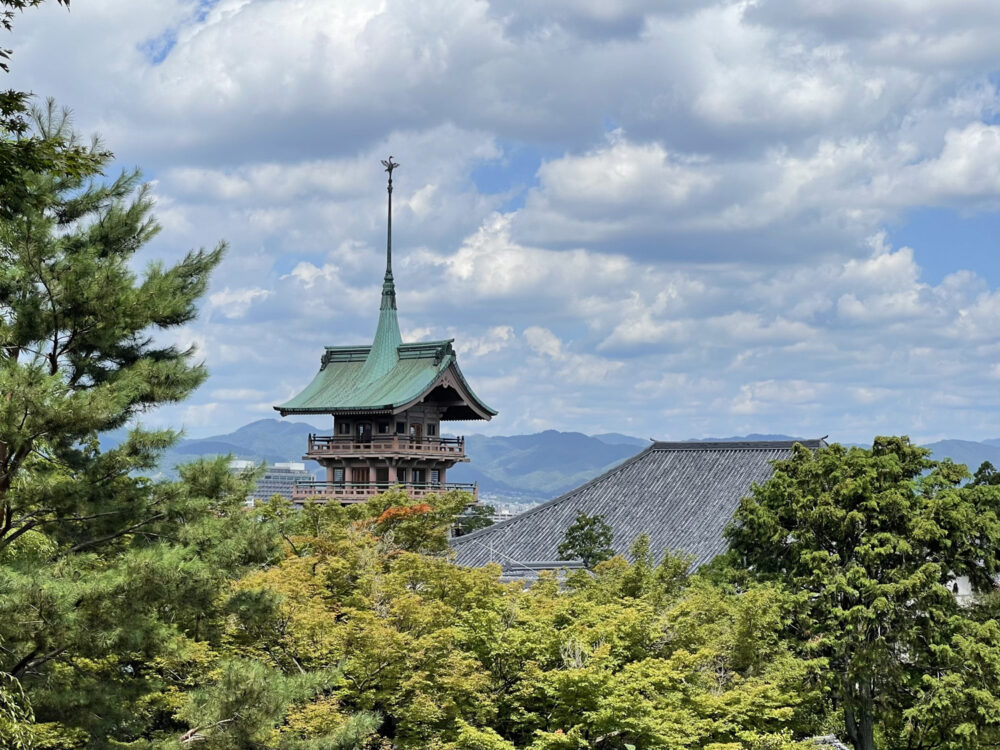
It turns out this temple was called Kōdai-ji, and is one of the more famous of the shrines which make up the Gion district within Kyoto. Through the trees I could catch some cool views over the rest of the city and the mountains beyond, but the real gems were to be found within the complex itself.
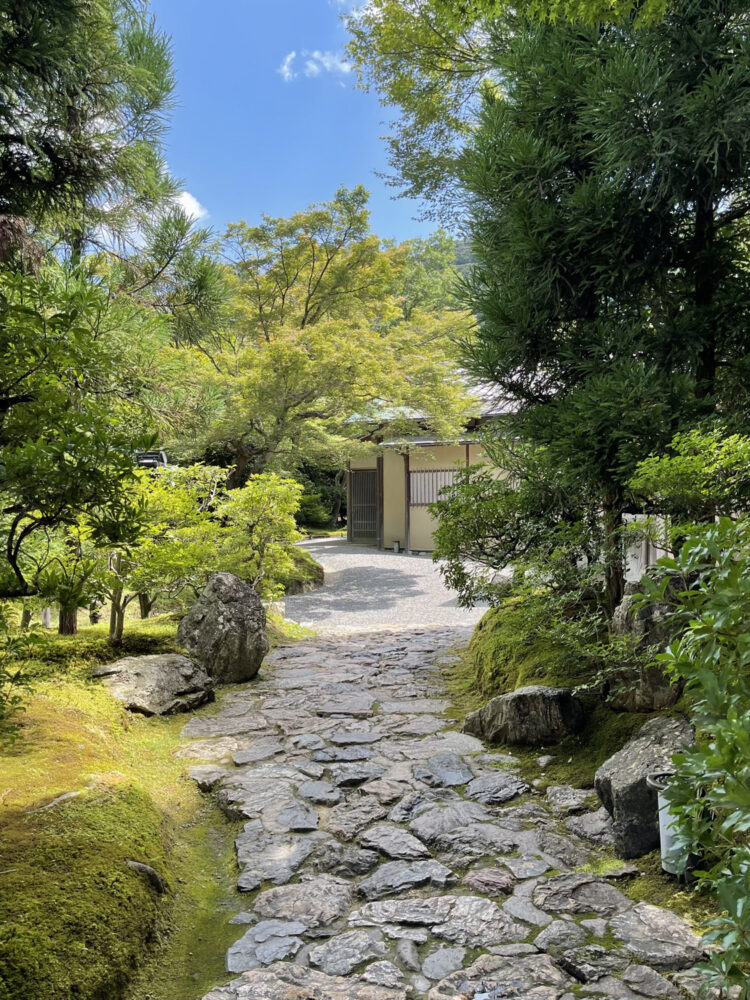
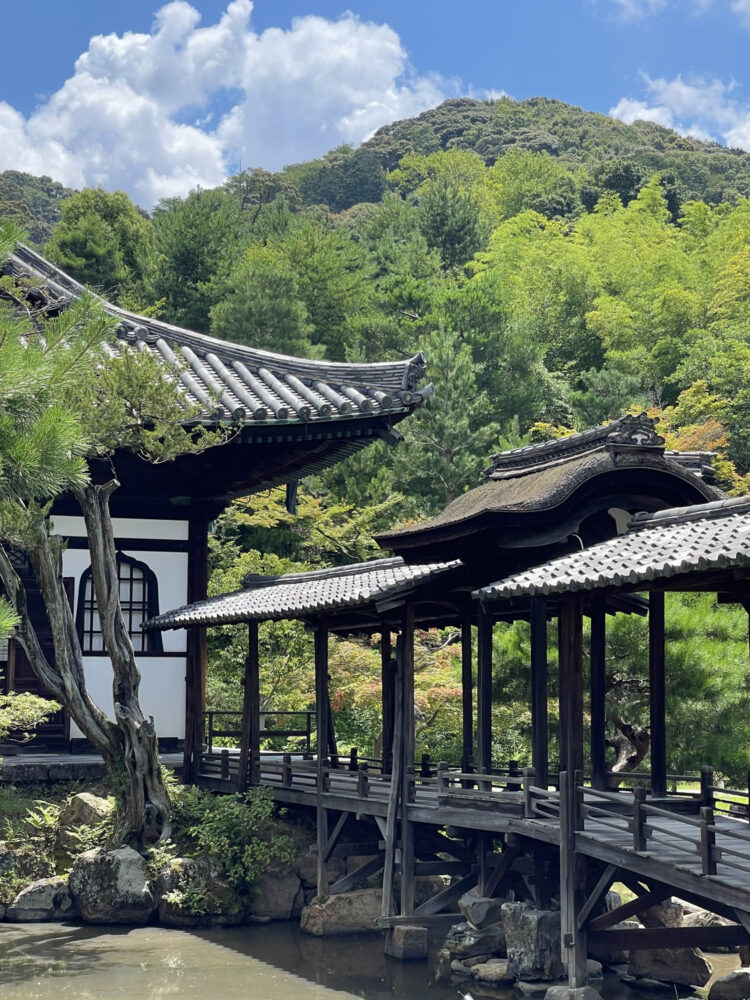
I was enchanted by the tranquil outdoor pathways which led me between delicate wooden constructions and the surrounding forest, but the indoor spaces were also a real sight to behold. I took my shoes off and explored the grand hall of the shrine, took respite under the wooden roofs of the walkways, and even walked solo through a pathway flanked by bamboo. It wasn’t the famous bamboo forest of Arashiyama, but being alone as I passed under these immense plants was quite a unique experience, one I think was made possible by the heat that had driven most sensible tourists away.
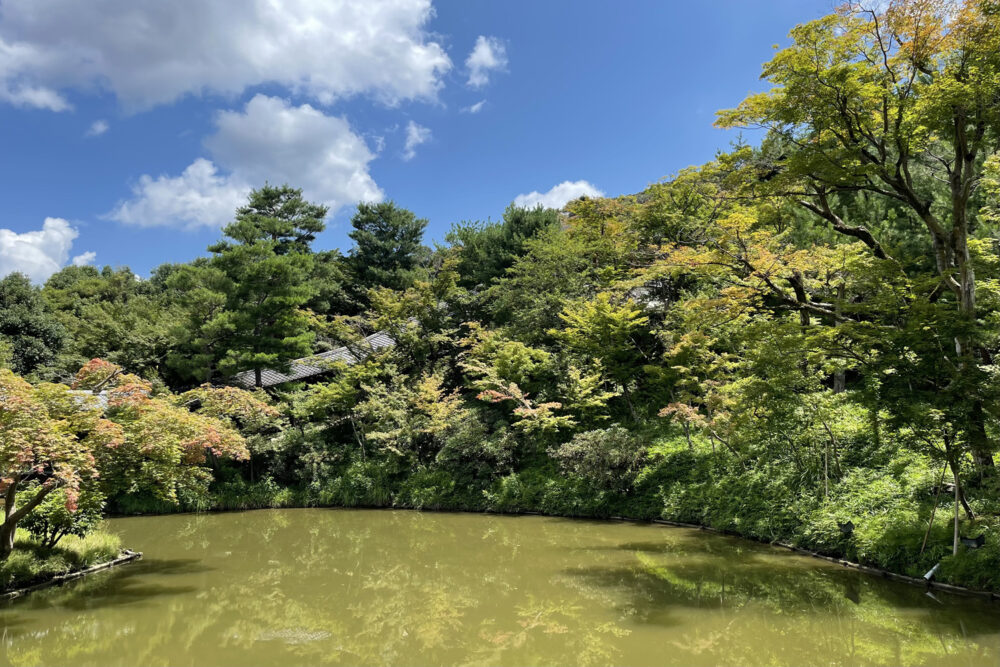
I loved my solitary wander through a bamboo forest.
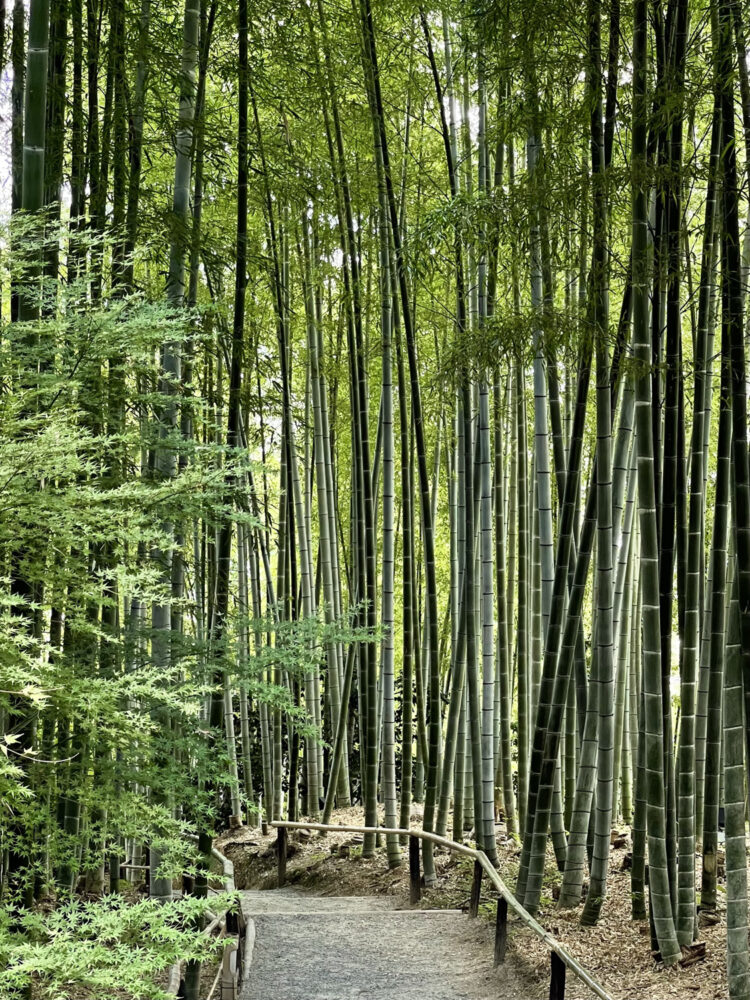
I then left the shrine and found myself exploring the streets of Gion once again. Now a little tired of temples, I headed to the famous view of the Hōkan-ji pagoda from the quaint little streets flanked by traditional houses. After my bad luck with my passport in Tokyo, I was now having a streak of good luck, and thus came across the area pretty deserted in order to take a good photo.
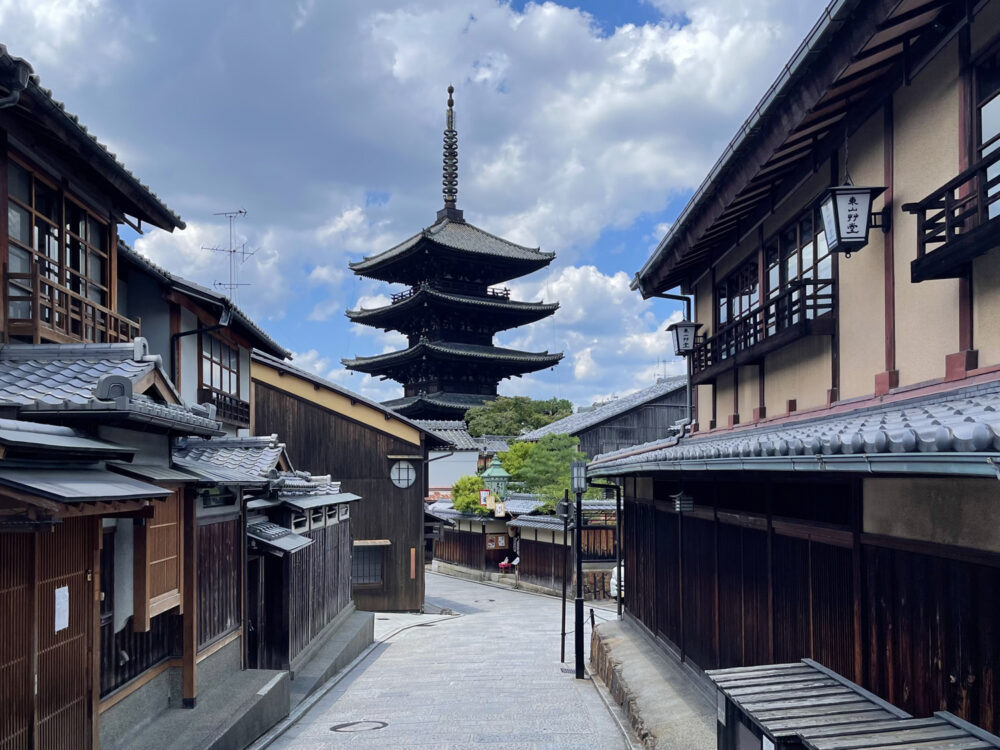
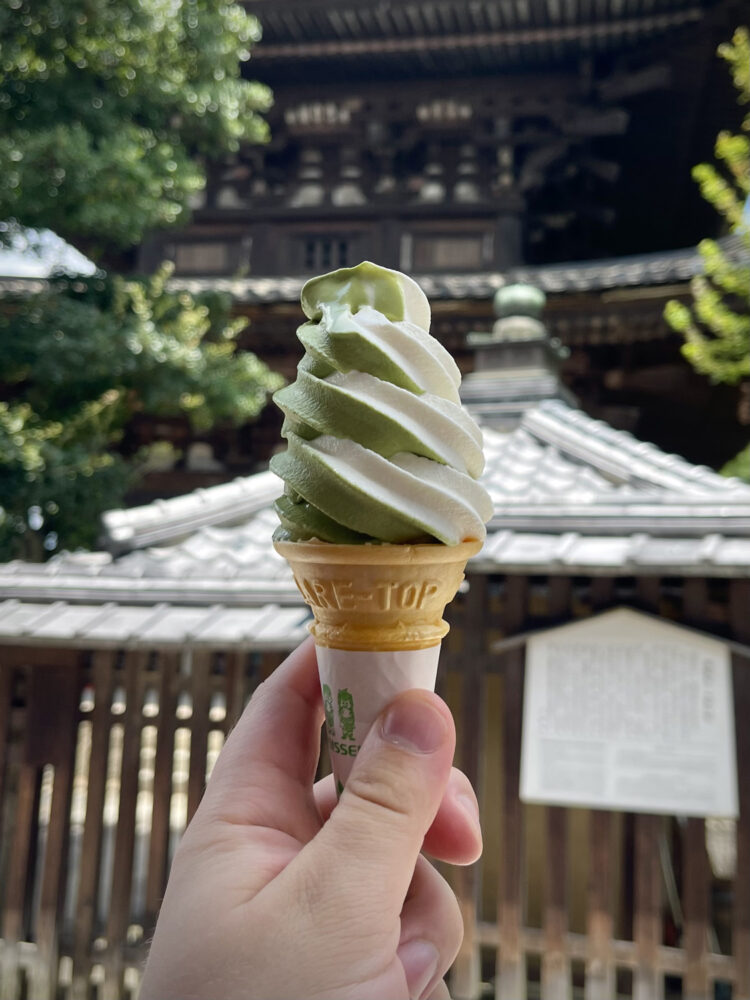
An ice cream was very much appreciated.
With my Gion experience more or less over, I stopped off to grab a matcha tea ice cream before leaving back for the centre of Kyoto. Matcha isn’t my favourite flavour, but it sure did hit the spot regardless!
The wander back towards my hotel took me through the gardens of the Kennin-ji temple, so I made a little detour to cool off between its trees and calm down with the relaxing sounds of flowing water.
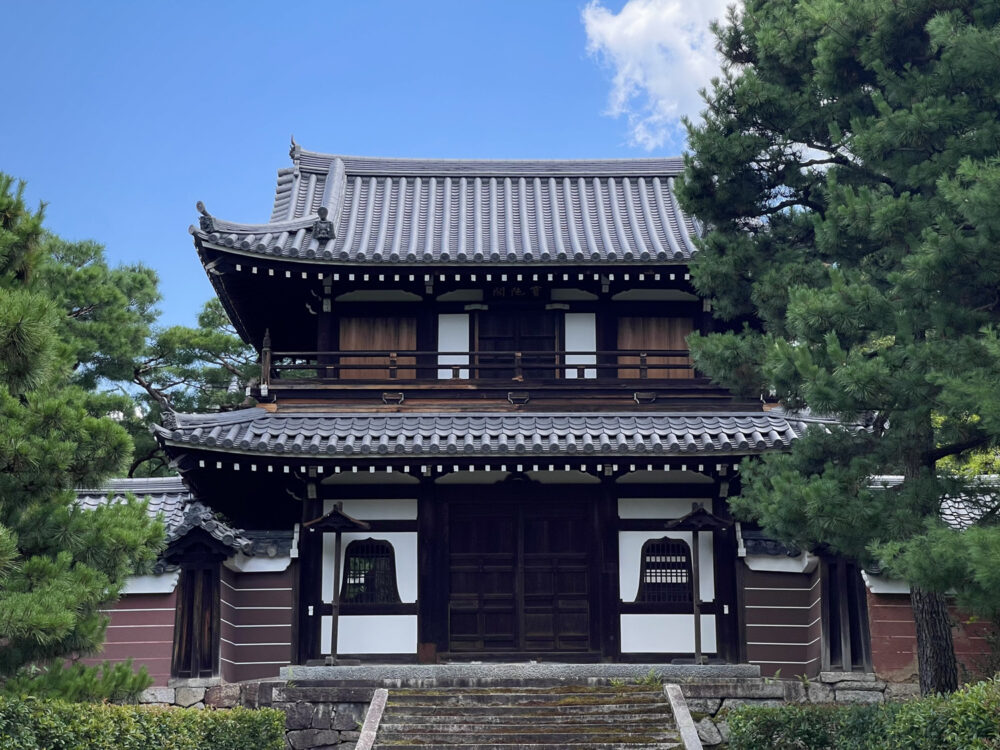
It was crazy how quickly urban scenes turned to tranquil gardens.
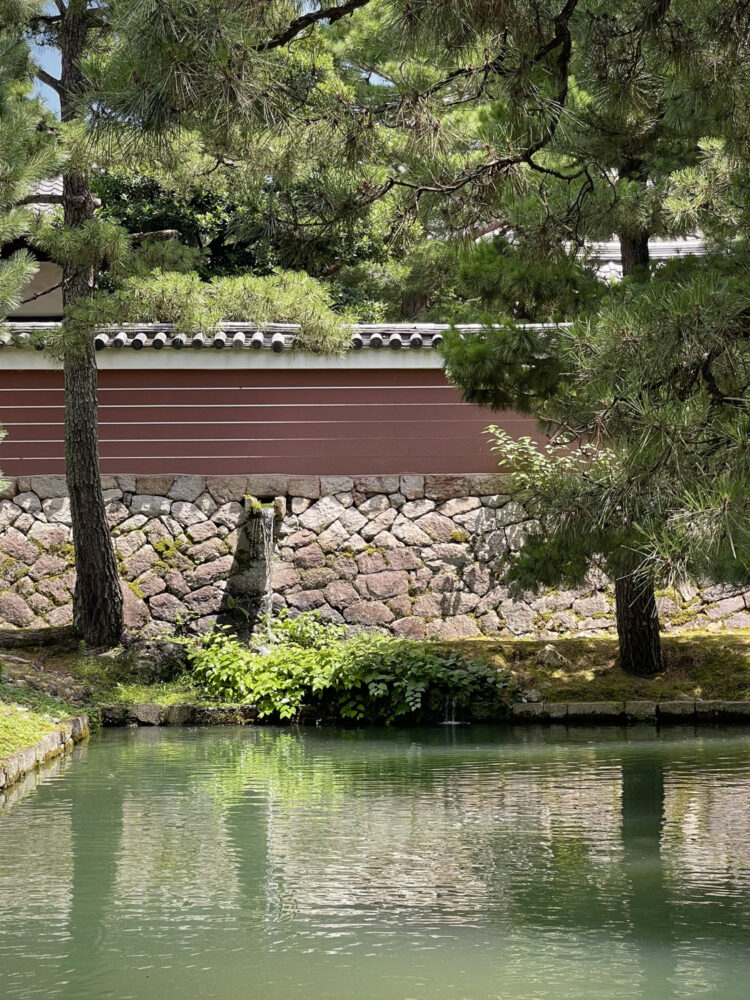
After grabbing a bus back to the centre, I wandered past my hotel and into the little streets behind it. This took me down some wonderful little alleyways between traditional hotels known as ryokans. I then arrived at my destination, a restaurant I’d been recommended for its obanzai offering. Obanzai is a culinary tradition native to Kyoto, whereby the ingredients uses must be in season and at least half of them must be sourced locally.
Another aspect of obanzai that nobody had mentioned to me is that it’s always a set meal. This I discovered as I sat down at the bar and was immediately served a series of dishes, one right after the other. This was accompanied by some green tea which I technically can’t drink due to its caffeine content, but which I felt semi-obliged to as part of the experience. I’m not complaining, though, for everything was delicious and came to a mere 1000¥, which at the time was about 6.50€ or £5.50.
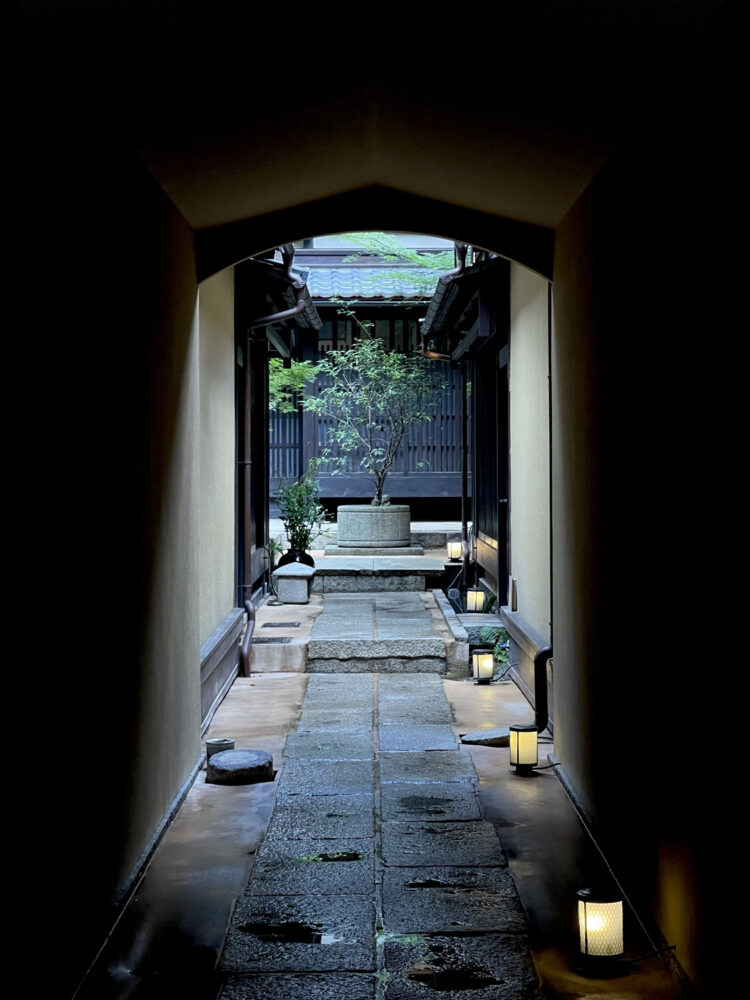
The tiny alleys of Kyoto are a real treat for explorers.
To digest the lovely food I went back to the hotel, where I napped and then showered before heading back out to visit yet another shrine. This was to be Fushimi Inari Taisha, a place famous the world over for its impressive walkway covered with thousands of torii. According to the internet, the mountain that it sits on may be home to over 10,000 of these red gates, something I can very well believe as I saw countless of them and I only visited one tiny section of the temple complex.
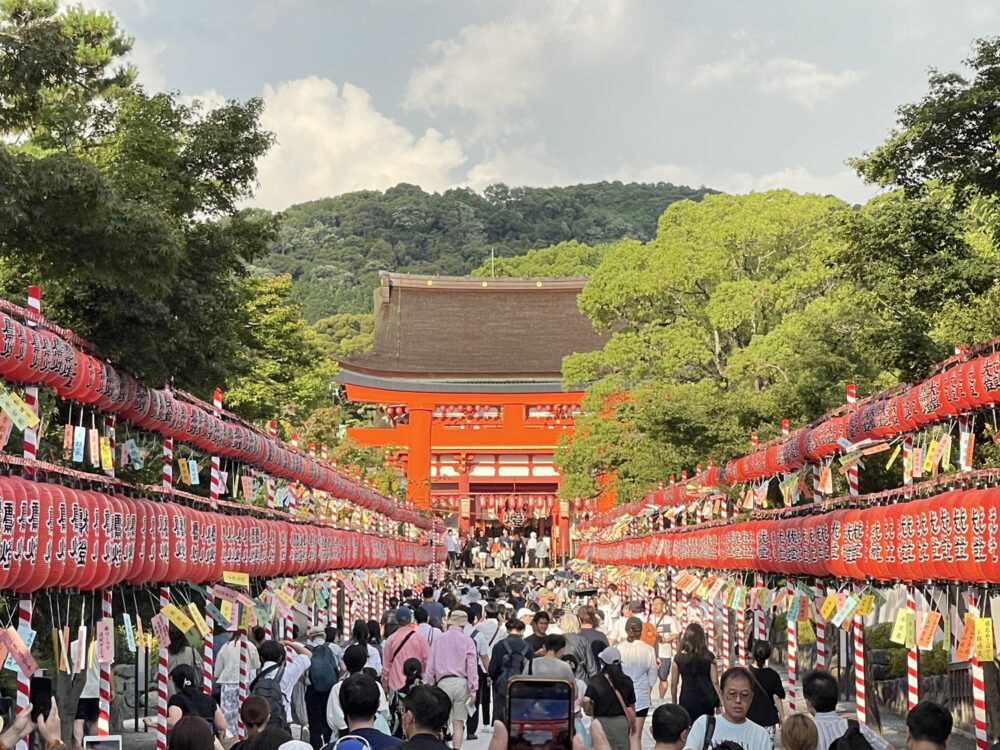
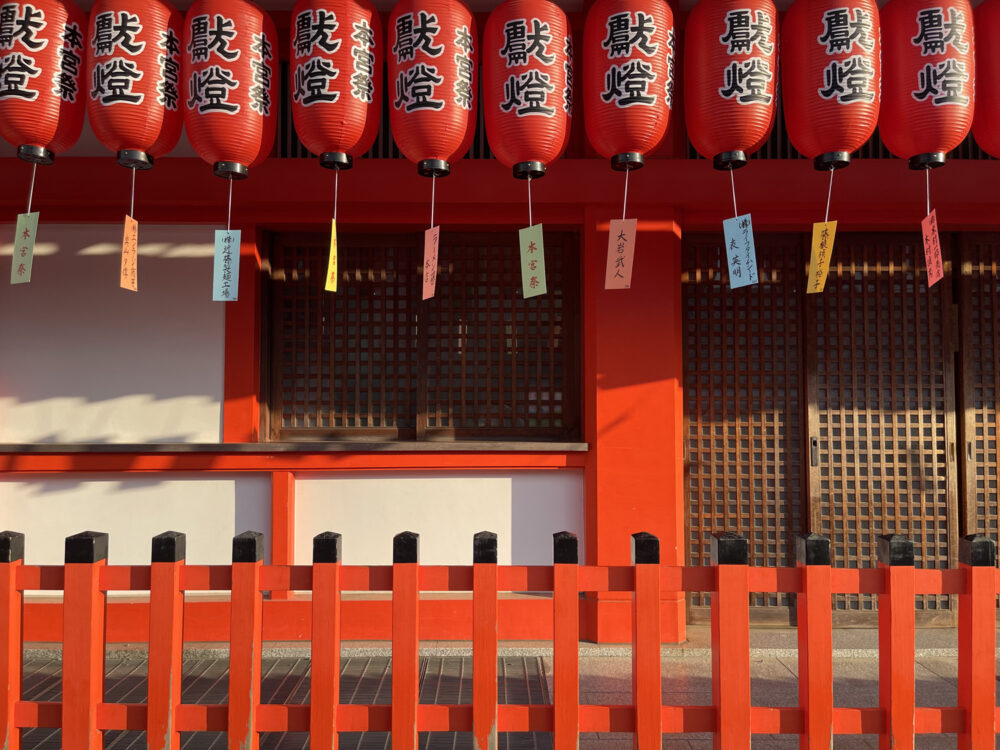
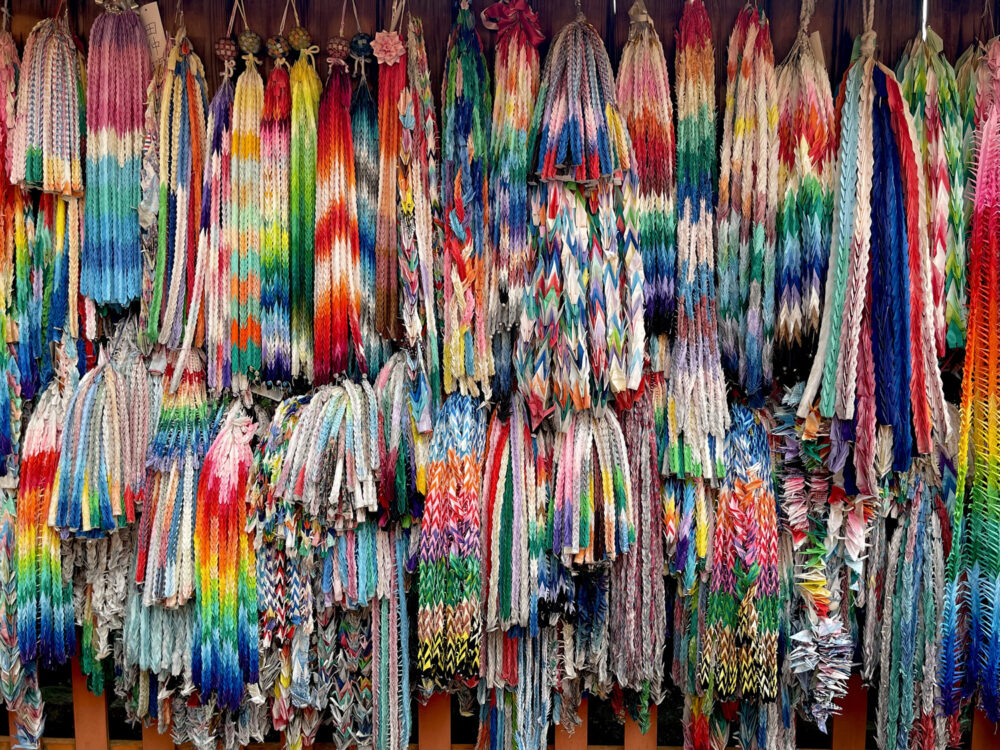
Here’s the obligatory selfie to prove I was actually here.
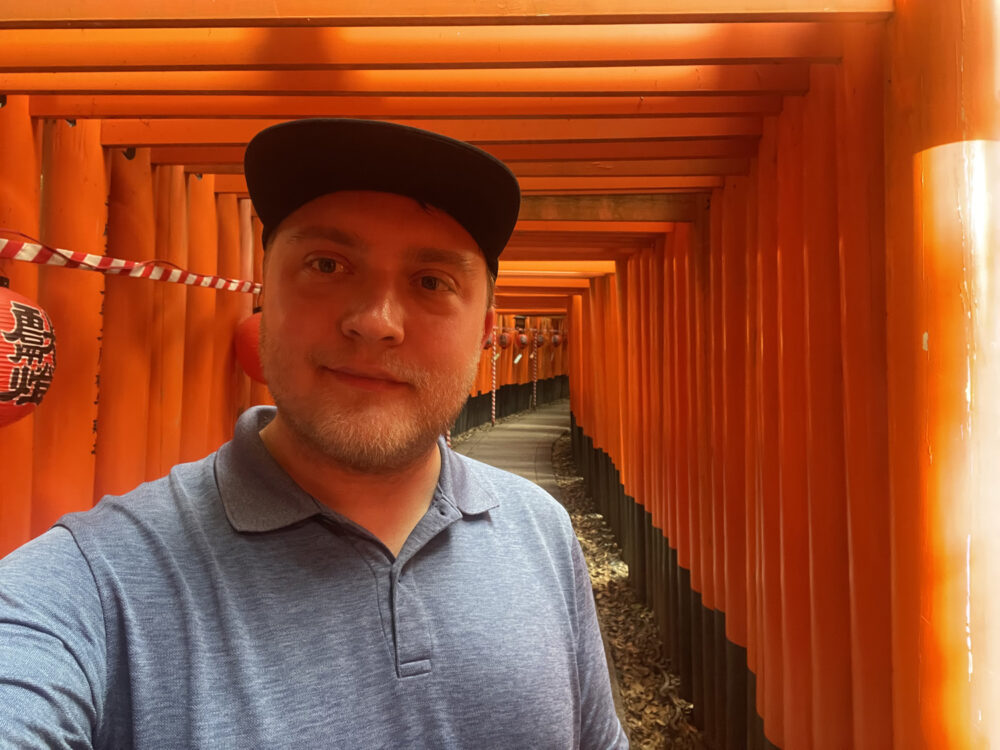
With my legs aching and the heat bearing down on me once again, I hopped on a train back into the centre of the city. Upon arrival, I reckoned I had just enough time to try and see just a bit more of Gion and maybe catch the sunset over the pagoda I had seen earlier. I had a long walk uphill ahead, but paced as best as I could in order to outrun the setting sun.
This descending street was as tranquil as it is gorgeous.
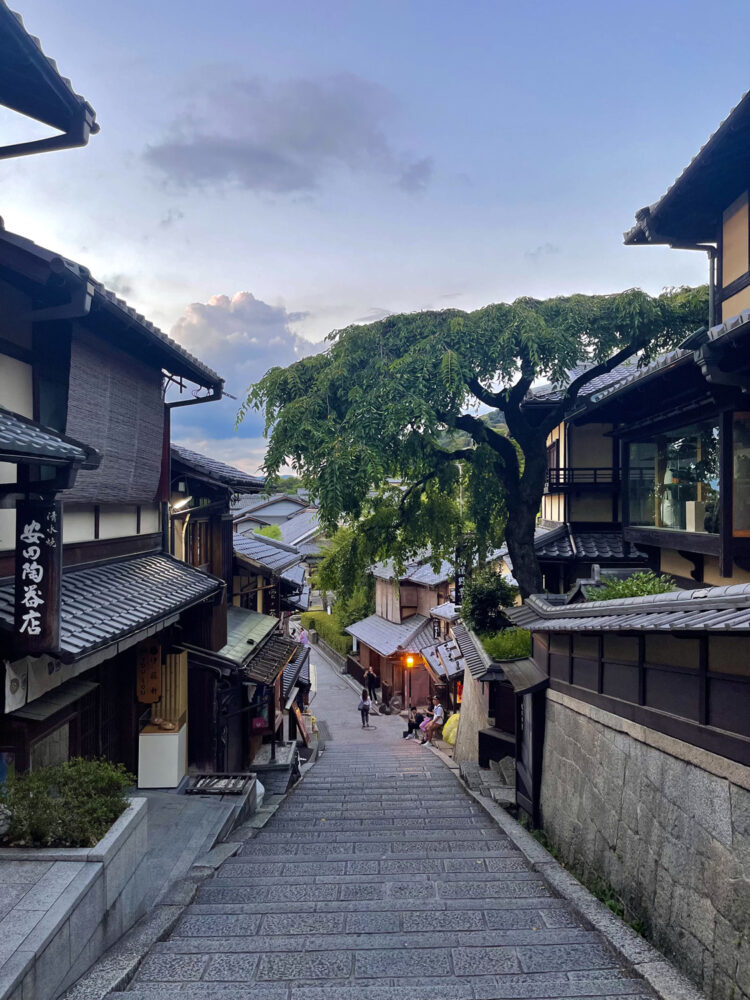
Although I could have perhaps done with being there half an hour earlier, I reached the area I wanted to be in just in time to watch the sun drop below the mountains in the distance. It was a lovely moment, but as I headed down towards the pagoda, I saw that many people had had the same idea as me and had thus convened on the streets to try and get a look at the evening sky. There wasn’t enough room to swing a cat…
In another stroke of sheer luck, I found a little alcove which offered some brilliant views over Gion, and from there managed to snap what I think is the best photo I took in Kyoto. I leave it below in all its untouched glory.
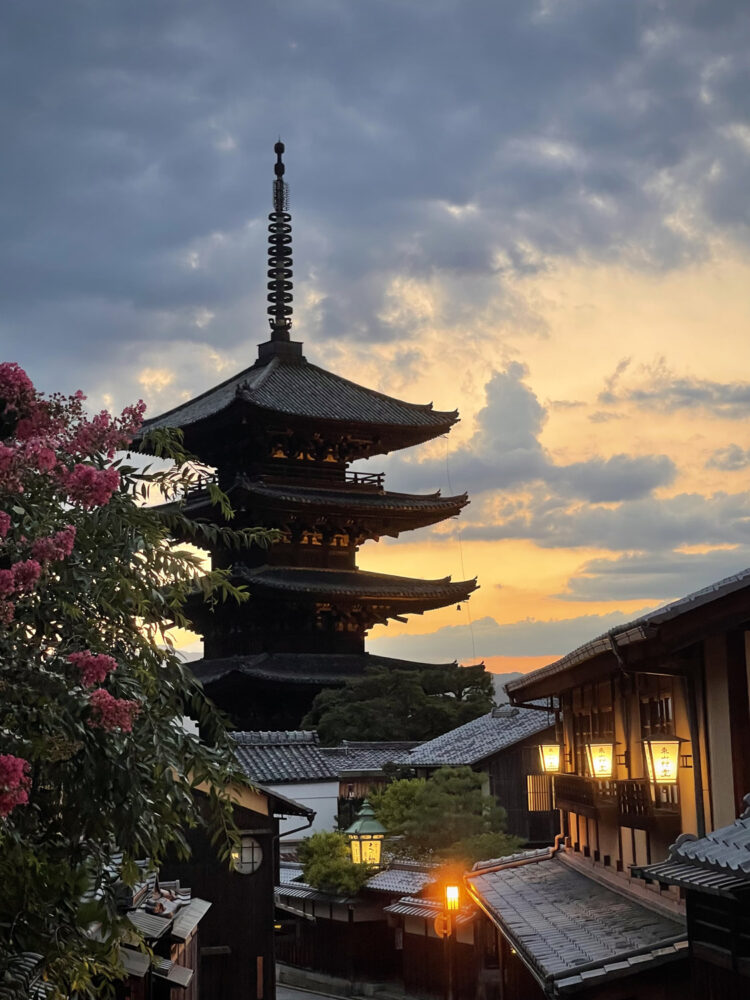
The quintessential evening scene from Kyoto.
With the sunset over, I made my way back to the hotel before heading out for something to eat. Inés recommended I visit a ramen restaurant that she’d enjoyed when she was in Kyoto, so I hopped on another bus and joined the queue to order at Ichiaran. With the line moving slowly, I got chatting to a French family who were a little confused by the ordering system as they’d just arrived in Japan.
After I’d explained as best as I could, I was called in to make my order via a machine and then join the second queue for a spot in one of the booths. These are individual eating compartments where you sit between a wooden screen on either side, with the space in front of you being closed off by a bamboo-rod curtain which the chefs can open to pick up your order card and then serve you your food.
Intrigued by the system, I made only one little deviation from the chef’s suggestion as I made my ramen order, asking for the stock to be a little richer: I do love a good strong taste. This I requested by circling a series of options on a paper ticket, which was then whisked away and pretty quickly replaced by my food. This came in the form of a big, steaming bowl of ramen, an egg still in its shell, and a plate of extra meat and seaweed that I could add to the ramen.
After opening the egg and being completely mystified as to how they’d managed to salt it to perfection without opening it, I configured my bowl and tried my first mouthful of noodles. I’m not exaggerating when I say that I then nearly began to cry: I don’t think I’d ever tasted something this delicious before in my entire life. With that said, I don’t think I need to elaborate more, but you can imagine that my long day exploring Kyoto had ended on a particular high: with the best meal I’ve ever eaten.
The next morning I was up at the crack of dawn (well, 9am felt like the crack of dawn to me) in order to check out and grab the second bullet train of my trip. I once again hauled my suitcase down the wonky streets of Kyoto, hopped on the metro, and then found the next train headed southbound…
Kyoto, just like Tokyo, had been absolutely amazing. Although they are both big cities, the time I sent in the Gion neighbourhood meant that Kyoto felt like a chance to leave the urban crawl behind in favour of a more natural and traditional side to Japan. The shrines, the streets, and the amazing ramen will stay with me forever!